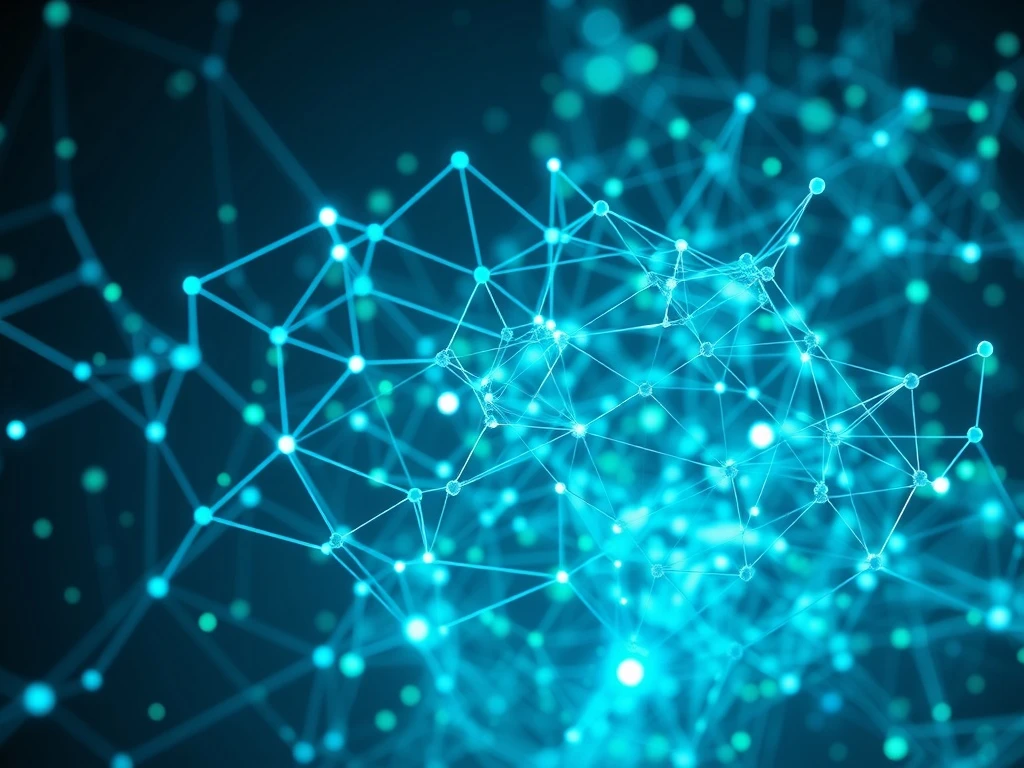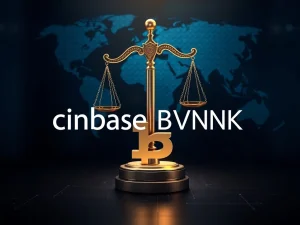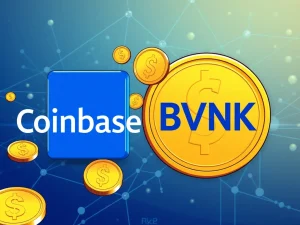Blockchain Scalability Revolutionized: Waterfall Network’s Groundbreaking DAG Architecture

The blockchain world is constantly chasing the elusive dream: achieving true Blockchain Scalability without compromising the fundamental promise of decentralization. For years, this has been a central challenge, leading to a myriad of proposed solutions, from layer-2 networks to sharding. But what if the answer lies in fundamentally rethinking the underlying data structure itself?
This is where the Waterfall Network enters the scene, carving out a new path with its innovative DAG-based architecture. Launched in July 2024, Waterfall Network is not just another layer-1 protocol; it represents a significant departure from the linear, chain-like models that have dominated the crypto landscape. By embracing a Directed Acyclic Graph (DAG) as its foundational ledger, Waterfall aims to deliver a level of performance and decentralization previously thought impossible for a base layer.
DAG Architecture Explained: A New Paradigm for Blockchain Scalability
At its core, the Waterfall Network leverages a Directed Acyclic Graph, or DAG. But what exactly is a DAG, and why does it matter for the future of Blockchain Scalability?
- Beyond the Chain: Unlike traditional blockchains, which arrange transactions in a single, sequential chain of blocks, a DAG is a non-linear data structure. Think of it as a web of interconnected blocks, where each new block or transaction can reference multiple prior blocks. This structure allows for parallel processing of transactions, as new blocks can be added concurrently without waiting for a global ordering.
- Eliminating Bottlenecks: The beauty of a DAG lies in its ability to eliminate the requirement for strict global sequencing at the time of transaction creation. Instead of a single, ordered queue, the ledger evolves as a concurrent graph. This means transactions can be processed and confirmed in parallel, dramatically increasing throughput.
- Waterfall’s Unique Hybrid Approach: While earlier DAG systems sometimes struggled with ensuring finality and consistency due to their highly parallel nature, Waterfall Network has engineered a sophisticated dual-network design to overcome these challenges. It doesn’t entirely discard linear ordering; instead, it smartly separates concerns across two interconnected subsystems:
- The Shard Network (The DAG Heartbeat): This is where the true power of the DAG structure is unleashed. The Shard Network handles the vast majority of transaction processing. It scales horizontally using an advanced technique called Fractal Sharding. Imagine a network that can split and re-split itself into smaller, independent sub-networks (shards) as demand grows. Each shard can process transactions independently, allowing for massive parallelization. Yet, all these shards are designed to ultimately sync to a shared global state, ensuring consistency.
- The Coordinating Network (The Finality Layer): This secondary network plays a crucial role in bringing order to the concurrent chaos of the Shard Network. It finalizes transactions from the DAG by selecting “spine blocks” and sequencing them. This ensures network-wide consistency and provides the crucial element of transaction finality that pure DAGs sometimes lack. This dual approach allows Waterfall to process transactions in parallel while maintaining a robust global state without overloading any single part of the network, a critical step towards achieving unprecedented Blockchain Scalability.
Fractal Sharding: Unlocking Horizontal Scalability
The concept of sharding is not new in the blockchain space, but Waterfall Network introduces an innovative twist with its hierarchical Fractal Sharding.
- Dynamic Adaptation: Unlike static sharding solutions, fractal sharding allows the network to dynamically adapt to varying loads. As transaction demand increases in a specific area of the network, a shard can automatically split into smaller subshards. This means resources are allocated precisely where needed, preventing bottlenecks and ensuring efficient processing.
- Infinite Scalability Potential: This “shard-within-a-shard” architecture theoretically offers near-infinite horizontal scalability. Each new subshard contributes to the network’s overall throughput, meaning the network can grow in capacity alongside user demand, without requiring a complete re-architecture.
- Maintaining Cohesion: Despite the independent processing within shards, the Coordinating Network ensures that all shards ultimately converge on a unified, consistent global state. This intricate dance between parallel processing and global consensus is what makes Waterfall’s approach to Blockchain Scalability so compelling.
Validator Design and Performance: A Path to True Decentralization
A network’s ability to scale is only as good as its ability to remain decentralized. This is where Waterfall Network makes a strong case for its commitment to Decentralization through its thoughtful validator design.
- Impressive Throughput: During benchmarking conducted by Chainspect, Waterfall Network achieved a peak throughput of an astonishing 12,777 Transactions Per Second (TPS). To put this into perspective, this performance significantly outperforms high-speed EVM-based competitors like Monad and SEI, which are themselves considered high-performance chains. This demonstrates the raw power of its DAG and sharding architecture.
- Inclusive Participation: Perhaps even more critical for Decentralization than raw speed is the accessibility of network participation. Waterfall’s validator framework is designed to support up to 1.5 million participants. This is an immense number, signaling a commitment to broad distribution of network control.
- Low Hardware Barrier: Running a validator on Waterfall Network requires remarkably modest hardware: just 2-core CPUs and 8GB RAM. This is a stark contrast to the often demanding node requirements of many high-performance chains, which can necessitate expensive, specialized hardware. By keeping the hardware barrier low, Waterfall enables a much wider range of individuals and entities to participate as validators. This directly combats centralization, as it prevents the network from being dominated by a few powerful entities with access to enterprise-grade equipment. More validators mean a more robust, resilient, and truly decentralized network.
The Promise of Decentralization: Why Waterfall Matters
The core ethos of blockchain technology revolves around Decentralization. However, many high-performance chains face a dilemma: to achieve high TPS, they often require powerful nodes, which can lead to fewer participants and, consequently, greater centralization. Waterfall Network seeks to break this trade-off.
- Resilience Through Distribution: With its low hardware requirements and support for millions of validators, Waterfall is building a network where control is distributed among a vast number of independent nodes. This makes the network inherently more resilient to attacks, censorship, and single points of failure.
- Community-Driven Growth: A decentralized network with low barriers to entry fosters a more vibrant and engaged community. More participants can contribute to network security, governance, and development, ensuring that the network evolves in a way that serves its users.
- Addressing the Trilemma: The blockchain trilemma posits that a blockchain can only achieve two of three properties: scalability, security, and decentralization. Waterfall Network, with its innovative DAG and sharding approach, alongside its inclusive validator design, aims to provide a compelling argument that it is possible to make significant strides in all three areas simultaneously, pushing the boundaries of what is possible in the blockchain space.
Beyond the Hype: Challenges and the Road Ahead
While the Waterfall Network presents a fascinating and promising alternative for Blockchain Scalability and Decentralization, like any new technology, it faces its own set of challenges.
- Adoption and Network Effect: Building a robust ecosystem requires widespread adoption from developers, users, and enterprises. Competing with established ecosystems like Ethereum or Solana is a monumental task, even with superior technology. The network effect is powerful, and Waterfall will need to attract a critical mass of projects and users.
- Security of a New Paradigm: While DAGs offer performance benefits, their security models differ from linear blockchains. Ensuring the integrity and immutability of a highly concurrent, sharded DAG system is a complex engineering feat. Continuous auditing, rigorous testing, and community vigilance will be crucial.
- Educating the Market: The concepts of DAGs, fractal sharding, and dual-network designs are complex. Effectively communicating the benefits and mechanics of Waterfall Network to a broader audience, including non-technical users, will be vital for its success.
- Competition: The race for scalability is intense. New layer-1s and layer-2s are constantly emerging, each with their own unique approaches. Waterfall Network must continuously innovate and demonstrate its advantages to stay ahead.
The Full Picture: Insights from Crypto News Insights Research
For those eager to delve deeper into the technical intricacies and broader implications of the Waterfall Network, the comprehensive report by Crypto News Insights Research offers invaluable insights. This report meticulously investigates Waterfall Network’s architecture, validator roles, DAG propagation mechanics, and ecosystem overview. It provides an independent assessment of whether this innovative protocol can truly become a sustainable, alternative base layer for the decentralized future. Understanding these details is key to appreciating the full scope of Waterfall’s potential.
Conclusion: A Bold Step Towards a Scalable, Decentralized Future
The Waterfall Network represents a bold and significant step in the ongoing quest for true Blockchain Scalability without compromising Decentralization. By leveraging a pioneering DAG-based architecture, a sophisticated dual-network design, and innovative Fractal Sharding, it offers a compelling vision for a high-performance, inclusive, and resilient decentralized future. Its impressive TPS benchmarks coupled with remarkably low validator requirements suggest a powerful combination that could redefine the baseline for layer-1 protocols. As the digital landscape continues to evolve, projects like Waterfall Network remind us that the path to a truly decentralized and scalable future is being paved by continuous innovation and a willingness to explore new architectural frontiers. This journey is just beginning, and the implications for the wider blockchain ecosystem are profound.







